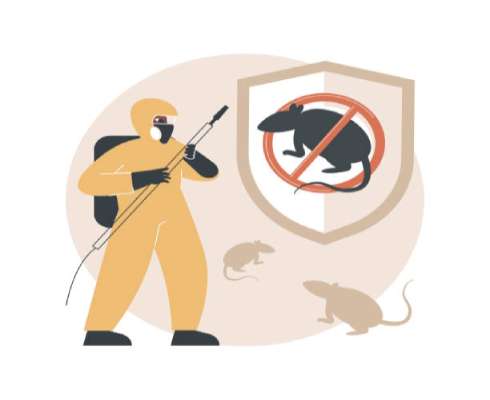Paris, like any large metropolis, has a rat problem. The furry creatures scurry through the city’s parks, subway stations and fancy streets on a daily basis.
But Paris leaders are forming a committee to study how humans and rats can coexist. They’re fighting prejudice against the rodents while also managing the city’s population.
Traps

Paris isn’t necessarily the most rat-infested city in the world — though you might be forgiven for thinking so after seeing the viral video of garbage collectors trying to deal with hungry rats crawling from the bottom of bins. The French capital houses about six million rats — about 2.5 per resident.
The City of Light’s enduring probleme de rat probably has roots in the city’s sewers and hollowed-out gypsum quarries, where the rodents make their homes. But it also might be caused by recent roadworks, which pushed rats out of their underground holes. And it might be caused by trash worker strikes that left waste piles to rot and food out on the streets.
Mayor Anne Hidalgo has vowed to fight back with a series of measures that includes more aggressive trapping and poisoning, and more information campaigns designed to discourage residents from feeding the rats. She’s even appointed a “rat czar.” But despite these efforts, the city is still beset by a raging rat epidemic.
Poisons
The rats of Paris are so abundant that even the city’s garbage collectors have a hard time coping. In a key scene from Disney’s “Ratatouille,” the father of the film’s hero shows him a pest-control store, with its medieval-looking traps and boxes of rat poison.
Second-generation anticoagulant rodenticides are incredibly toxic. When a rodent eats them, they interfere with the blood’s ability to clot, leading to internal bleeding and death within a few days. This also makes non-target animals, such as birds of prey, easy prey, and can lead to secondary poisoning when pet and wild creatures consume the dead animal or its contaminated feces.
The EPA has ordered these toxic chemicals off the general market, but three major manufacturers – Spectrum Group, which makes pet-care products alongside rat and mouse poisons like Hot Shot; Liphatech, which produces the Rodenticides Generation and Maki; and Reckitt Benckiser, which markets household names such as Woolite, Lysol and brodifacoum-laced d-Con — have refused to stop making them. These companies are not only in defiance of a federal order; they’re also in direct conflict with the public, as they’re selling these toxins to people who don’t know that they’re toxic to pets and wildlife.
Humane Extermination

Rats are intelligent creatures, capable of living in almost any environment. They don’t need to see to find food, they can crawl into the cracks of walls and other structures without a problem, and their noses can tell them where the best grub is.
Despite Paris’s efforts to keep them at bay, there are still too many rats for the city to handle. They can be seen scavenging through trash bins, crisscrossing the grassy areas of parks and the Champs Elysees and wreaking havoc at open-air markets.
The critters even pose a health threat, as they are known to carry leptospirosis, a bacterial disease that most often affects people who participate in “leisure activities in environments soiled by the urine of infected rodents.” But despite these grim statistics, there are some who think that the Parisian public should embrace their city’s resident rats. This is a head-scratching proposition.
Cleanup
The famous video of Parisian garbage collectors struggling to deal with a bin full of hungry rats has prompted city leaders to take action. Several of the arrondissements have hired their first-ever rat czar, a former teacher named Kathleen Corradi, to lead an ambitious strategy of sanitary inspections, trapping and information campaigns designed to discourage food waste from being dumped in public spaces.
She says that a key to success is eliminating the shelter that rats need to survive, including tall grass and weeds, garbage piles and abandoned vehicles. She also advocates preventing future construction sites from opening until they are proofed against rats, and requiring restaurant owners to clean their terraces each evening before closing so the soiled food is not left to attract rodents.
Summary:
Even with all these measures, the City of Light may be facing a big rat problem. It is said to contain around 1.5 rats for every inhabitant, and the population rises during periods of hot weather.

Denise Moreno is a business consultant. She teaches people how to start a business. She tries to understand her client her own thought, tricks and show the possible way to start a business. She worked with hundreds of clients and made them successful. She earned his degree in the University of South Florida. Lynn is her husband’s name. They got married in 2009. They have two girls. Both of them have a passion for travel.

